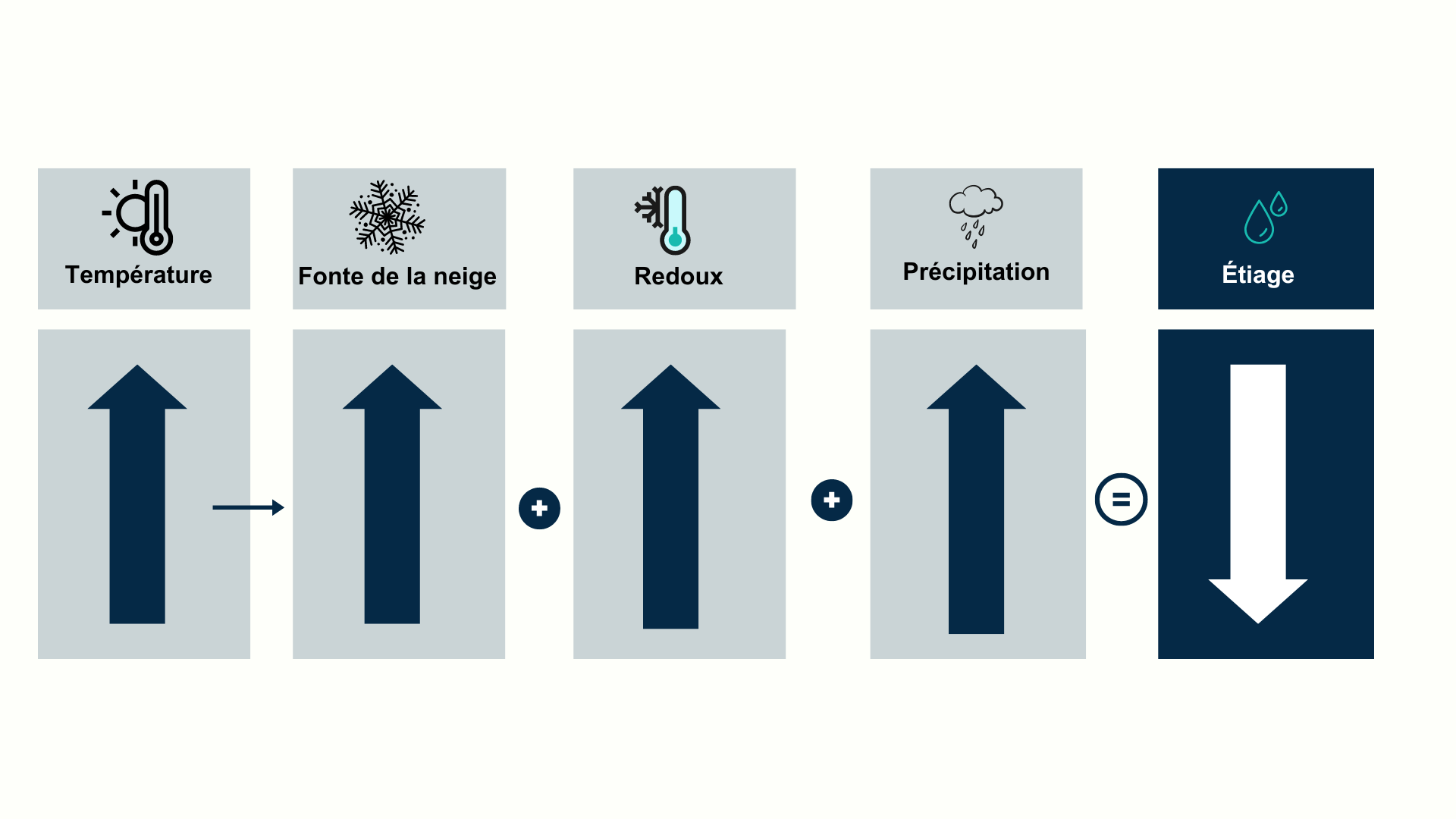Low water levels and hydrological droughts
It’s hard to determine how much the observed trends in water levels can be attributed to climate change.
While climate factors play an important role in Quebec’s hydrological system, we must not overlook the influence of other factors, such as:
-
Land use and development
-
Watershed characteristics
-
Changes in water withdrawals
-
Changes in water consumption habits
-
The different methods for measuring flow
-
High inter-annual variability
Low water in summer and autumn
Observations taken in the summer and fall have shown a correlation between certain climate factors and the intensification of low water levels and hydrological droughts. During these seasons, higher temperatures lead to an increase in evapotranspiration. Despite a slight increase in precipitation, this positive impact is offset by the increased evapotranspiration. As a result, water levels in rivers and streams fall, leading to more periods of low water and hydrological drought in summer and autumn.
Observational data indicates that about a third of hydrological gauging stations located on rivers in southern Quebec are recording longer and more severe low water levels than those observed since 1970. However, for the province as a whole, the majority of stations show no particular trend.

Figure 1: Climate factors influencing the increase in summer and autumn low water periods and hydrological droughts.
In other words, observations show that the increase in the severity of low water levels mainly affects southern Quebec, the most populous region in the province, while the rest of the province remains within the thresholds similar to those observed since 1970.
Low water levels in winter and spring
The winter and spring, which are usually marked by more periods of low water and hydrological drought due to the accumulation of precipitation in solid form (snow and ice), show a decrease in these episodes, according to observational data.
This trend is the result of warmer temperatures during these seasons, leading to earlier and faster melting of snow and ice and more frequent thaws. Combined with an overall increase in precipitation, a greater proportion of which is in the form of rainfall, these factors favour higher river levels and, consequently, a reduction in low water periods and hydrological drought.
More specifically, in spring and winter, observational data shows that around 40% of hydrological gauging stations in southern Quebec record low water periods that are less severe than those observed since 1970.

Figure 2: Climate factors influencing the decrease in winter and spring low water periods and hydrological droughts.
However, it should be noted that 57% of measuring stations across Quebec—the majority—recorded no change in the severity of low water periods.